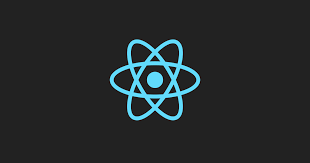Building a mobile app can be a significant investment for businesses, particularly when aiming to develop apps for both iOS and Android platforms. Traditional native development requires separate teams, which increases costs and complexity. However, cross-platform frameworks like Flutter and React Native have made it possible to create cost-effective mobile applications without sacrificing performance or user experience. These frameworks allow businesses to develop apps faster and more affordably by using a single codebase for multiple platforms.
In this article, we’ll explore how Flutter app development company solutions and React Native development services enable businesses to deliver cost-effective mobile app development while ensuring high-quality and scalable outcomes.
Why Cost-Effective Development is Important
For businesses, managing costs while delivering a high-quality product is essential to achieving a positive return on investment (ROI). Mobile app development, especially when building for both iOS and Android, can become expensive if handled through traditional native development. By reducing the need for separate development teams, optimizing the development process, and leveraging a single codebase, businesses can significantly cut down on costs while still creating powerful, feature-rich mobile applications.
How Flutter Reduces Mobile App Development Costs
Flutter, developed by Google, offers businesses a cost-effective solution for building cross-platform mobile apps. With its ability to use a single codebase and deliver near-native performance, Flutter has become a popular choice for businesses looking to minimize development costs without sacrificing quality.
Here’s how Flutter app development company solutions help businesses reduce mobile app development costs:
- Single Codebase for iOS and Android: One of Flutter’s primary cost-saving advantages is its ability to create apps for both iOS and Android using a single codebase. This eliminates the need for separate development teams and reduces the overall cost of development by nearly half, as businesses no longer need to duplicate efforts for each platform.
- Faster Development with Pre-Built Widgets: Flutter’s rich library of pre-built widgets allows developers to build custom user interfaces quickly and efficiently. By reducing the time needed to design and implement UI elements from scratch, Flutter speeds up the development process, leading to lower development costs.
- Hot Reload for Faster Iterations: Flutter’s hot reload feature allows developers to make real-time changes to the app’s code and instantly see the results. This reduces the time spent on testing and debugging, leading to quicker iterations and cost savings throughout the development lifecycle.
- Lower Maintenance Costs: Since Flutter uses a single codebase, maintenance and updates are simplified. Businesses can roll out updates and bug fixes across both platforms simultaneously, reducing ongoing maintenance costs and ensuring that the app remains up-to-date with minimal effort.
- Open-Source Framework: Flutter is an open-source framework, which means there are no licensing fees. This further reduces the overall cost of using the framework, making it a budget-friendly option for businesses looking to develop mobile apps.
How React Native Lowers Mobile App Development Costs
React Native, developed by Facebook, is another highly cost-effective cross-platform framework that enables businesses to build high-performance mobile apps for both iOS and Android. By using JavaScript and native components, React Native development services provide businesses with an affordable and flexible solution for app development.
Here’s how React Native helps businesses reduce mobile app development costs:
- Single Codebase for Multiple Platforms: Like Flutter, React Native allows developers to write a single codebase for both iOS and Android. This reduces the need for separate development teams and cuts down on development time, leading to significant cost savings for businesses looking to develop apps for multiple platforms.
- Reusable Components for Faster Development: React Native’s component-based architecture allows developers to reuse components across different parts of the app. This modular approach speeds up the development process by reducing the need to write new code for each feature, ultimately lowering development costs.
- Extensive Library of Third-Party Plugins: React Native has a vast ecosystem of third-party libraries and plugins, allowing developers to integrate pre-built solutions for common app functionalities. By leveraging these pre-built solutions, developers can avoid the time and cost associated with building custom features from scratch, further reducing the overall cost of development.
- JavaScript Expertise: Since React Native uses JavaScript, one of the most popular programming languages, businesses can leverage existing JavaScript expertise within their development teams. This reduces hiring and training costs, making React Native a cost-effective option for businesses that already have JavaScript developers on staff.
- Lower Maintenance and Updates Costs: Maintaining a React Native app is cost-effective because updates can be applied to both iOS and Android from a single codebase. This reduces the time and effort required to maintain the app, resulting in lower ongoing costs for businesses.
Comparing Flutter and React Native for Cost-Effective Development
Both Flutter and React Native offer significant cost-saving advantages for businesses looking to develop mobile apps, but they differ in their approaches to cost-effective development:
- Development Time and Speed: Flutter’s pre-built widgets and hot reload feature allow for faster UI development, making it ideal for businesses that need to bring apps to market quickly. React Native’s reusable components and large plugin ecosystem enable rapid development, particularly for apps that require complex functionalities.
- Cross-Platform Capabilities: Both frameworks support cross-platform development, allowing businesses to develop apps for iOS and Android using a single codebase. However, Flutter’s support for web and desktop platforms extends its versatility and may reduce costs further for businesses looking to develop beyond mobile.
- Customization and Flexibility: Flutter’s customizable widgets offer more flexibility for building unique user interfaces, while React Native’s large plugin ecosystem enables faster integration of pre-built features. Depending on the level of customization needed, businesses may find Flutter or React Native more suitable for their cost-saving goals.
- Maintenance and Updates: Both frameworks allow for streamlined maintenance and updates across platforms. Flutter’s single codebase ensures that updates can be rolled out simultaneously for mobile, web, and desktop platforms, while React Native simplifies updates for iOS and Android.
Choosing the Right Framework for Cost-Effective App Development
When deciding between Flutter and React Native for cost-effective mobile app development, businesses should consider their specific needs, timelines, and budget:
- Choose Flutter if: Your business needs a cost-effective solution that supports rapid development across mobile, web, and desktop platforms. Flutter app development company solutions allow businesses to build versatile, scalable apps with lower development and maintenance costs.
- Choose React Native if: You want to leverage existing JavaScript expertise, integrate third-party plugins, and focus on mobile app development for iOS and Android. React Native development services provide a flexible, affordable solution for building high-quality mobile apps with minimal development and maintenance costs.
Conclusion
For businesses seeking to minimize the cost of mobile app development while delivering a high-quality product, both Flutter and React Native offer powerful solutions. By allowing developers to create apps for multiple platforms using a single codebase, these frameworks significantly reduce development time, complexity, and costs.
A Flutter app development company can help businesses build cost-effective, cross-platform apps that deliver consistent performance across mobile, web, and desktop. Meanwhile, React Native development services provide a scalable and affordable solution for businesses looking to build mobile apps with the flexibility of JavaScript and pre-built solutions.
By choosing the right framework, businesses can develop mobile apps that not only meet their budget but also deliver exceptional value to their users.






More Stories
Why Business Needs Mobile App Development Services in USA?
Remote Full Stack Developers in Dublin
How Azure Cloud is the Future of AI & ML